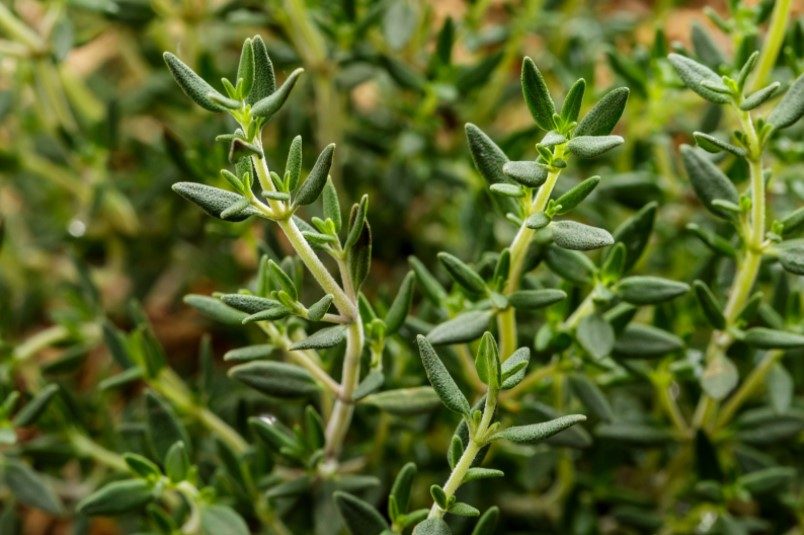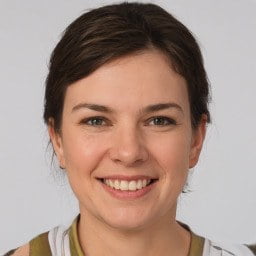Have you ever eaten braised pork, roasted meat, or baked vegetables and wondered why it’s so fragrant and rich in flavor? You’re right. There’s a big chance that those dishes are cooked with thyme as one of their ingredients.
Thyme (thymus) is a Mediterranean herb with dietary, ornamental, and medicinal use. Each of its parts is beneficial; you can utilize the flowers, leaves, or oil for a variety of use.
If you’re someone who fancies growing herbs in your house, you might want to create a continuous supply of thyme in your kitchen.
No worries! Here, we’re going to delve into how to grow thyme from a stem cutting, a method known for its convenience and generosity.
In this post
Thyme Characteristics
As a herb, thyme often grows on clusters of thin, small stems. It thrives best in humid, sunny locations with dry soil. Unlike other types of herbs, thyme doesn’t rely much on watering or fertilization.
It’s best planted on USDA Hardiness Zones 2 to 10, with Zone 5 as the most common zone.
If thrived, thyme can grow as much as 3 inches tall and 2 inches wide. What a perfect size to decorate your home!
Fun fact, thyme has up to fifty varieties with different uses, flavors, and fragrances. However, people use fresh or English thyme the most when it comes to garnishing or flavoring.
I often use thyme for either home decoration or combine it with tea to refresh my throat and mind.
Usually, I plant it in the ground and a container for a maximum result. Since my home is exceptionally sunny and humid, I can plant thyme all year long without worry!
Varieties of Thyme

As previously mentioned, thymes come in over fifty varieties. Here are some of the most common ones and their characteristics:
- Lemon thyme: an all-time favorite, lemon thyme has a luscious lemon scent and taste. It’s perfect for marinades, smoothies, and other kinds of dessert.
- Creeping pink thyme: as the name says, this thyme is best for stepping ground. The pink flowers will make your ground more beautiful than before.
- Elfin thyme: the smallest one of the group, Elfin thyme, is green with lavender flowers.
- Juniper thyme: offering silvery leaves, Juniper thyme grows 6-inches tall and blooms pink flowers that shine beautifully.
- Lavender thyme: a beautiful candidate for your garden, lavender thyme produces the most heavenly smell and pretty sight of its purple buds.
- Italian oregano thyme: the most commonly used thyme, Italian oregano is 12-inches tall and tastes zesty in the mouth—perfect for any Italian dish.
- Silver thyme: looking bright with a white-edge green streak, Silver thyme might grow 1 inch tall and produce a pretty pink flower when it fully blooms.
- Caraway thyme: having the double agent benefits of being both a ground cover and a culinary herb, Caraway thyme is easily spotted due to its pink flowers and 4-inches height.
- Pennsylvania Dutch tea thyme: this thyme is perfect for tea-brewing, either fresh or dried. You can easily spot this type of thyme due to its oval leaves and pink flowers.
How to Plant Thyme
You can easily grow thyme from seed or stem cutting, both methods works great. However, I always prefer the layering method as it is easier and less time-consuming. But here are all the methods:
1. From Seed
- One of the most common ways to plant thyme, planting your thyme from seed will begin by gently spreading seeds over the ground or container soil where you plan to plant it.
- Afterwards, cover the seeds with a thin layer of soil.
- The next step is covering the soil with plastic wrap and placing it in a warm, humid location with enough sunlight and let it germinate for one until twelve weeks.
- Once the seeds have grown roots of 4-inches high, move them into a larger place in your garden.
Unfortunately, people usually avoid planting thyme from seed as it takes a long time to germinate and sprout. This is why people prefer the cutting or layering method, as it is easier and faster.
2. From Cutting
Another way to plant thyme, the cutting method proves to be easier and faster to harvest.
- You can begin by clipping a three-inch part from a thyme stem and applying a rooting hormone to the exposed part.
- Afterwards, plant it in sterile sand or vermiculite. You only need to wait for about six weeks, and you can transfer it to a small pot where it will grow into a root ball.
- Once it has grown bigger, move it to your garden.
3. Layering
A less known method but just as effective, layering is another way to create a thyme garden in your home.
- The first step is to take a long thyme stem and secure it with a wire or U-shaped stake in the soil. However, make sure to leave about four inches tip free from the ground.
- The next step is to wait for about one month until roots start to grow around it.
- Afterwards, you can cut the newly formed plant from the main plant and move it to your garden.
- Don’t forget always to pick the method that works best in your area.
Taking Care of Thyme Plants
While thyme has a lot of benefits and advantages, it’s also a plant that needs to be taken care of and groomed.
Now that you know how to grow thyme from a stem cutting, it’s time to figure out how to take care of them so they’ll continue to be healthy and pest-free.
- Thyme dislikes water, so only water deeply once the soil is completely dry.
- Every herb plant needs pruning. The best time to prune thyme is during spring and summer to contain the growth.
- Planting your thyme during winter days and your ground is freezing? Always remember to lightly mulch around the plants to protect the soil and contain erosion.
- If your thyme is already three or four years old, consider replacing it because older plants tend to be woody and taste less flavorful.
- Take some cuttings and consider planting them indoors.
How to Harvest Thyme
Wondering how to harvest thyme without killing the plant? Here’s a foolproof step for it.
- During harvest, always leave at least 5-inches of growth so that the plant can recover.
- The best time to harvest thyme is just before the plant grows flowers.
- Cut off the top, leafy part of thyme and avoid the woody ones as it doesn’t taste as good.
- The best time to cut thyme is in the morning once the dew has dried and it’s still fresh.
- Don’t wash clean thyme as it’ll remove the essential oils.
- Trimming is just as important as harvesting. Make sure to trim your plant every once in a while to keep it neat and healthy.
- Trim thyme whenever the plant becomes leggy.
How to Store Thyme
Here are various methods to store thyme.
- Just finished harvesting your fresh batch of thyme and not ready to use it yet? Consider wrapping the stems in a damp paper towel and tuck it in a plastic bag. Afterwards, you can freeze it in your refrigerator.
- Want to dry your thyme? Hang the sprigs in a warm, well-ventilated, yet dark area until it’s completely dried. Afterwards, store them in an airtight container, so it doesn’t rot. Once you want to use it, crush the leaves so it’ll produce the most flavor.
- For a longer period of storing, dry your thyme by placing it on parchment paper and set the oven on the lowest setting.
Some Questions about Growing Thyme
When is the best time to plant thyme?
The best time to plant thyme is when the temperature reaches 70°F, and it’s two or three weeks before the end of spring frost. You can also plant it during early summer when the weather is sunny and humid.
Where does thyme grow best?
It’s best planted on USDA Hardiness Zones 2 to 10, with Zone 5 as the most common zone.
How often should thyme be watered?
Thyme doesn’t really like water, so water it only when the soil is completely dry.
Can you revive dead thyme?
Yes, to a certain extent. If your thyme is drying out and one step away from dying, revive it by locating the plant under the sunlight and water the dry soil. When the soil dries out and it seems like the roots are still working, you can water it again until it begins to revive.
However, if your thyme is hopeless, make sure to use the leaves in your cooking so that it doesn’t go to waste.
Is thyme still good after it flowers?
Yes, but expect a milder, less flavorful taste in your thyme. The best time to harvest thyme is before the plant starts to flower because once the flower fully blooms, the herb will lose a little bit of its flavor and intensity.

